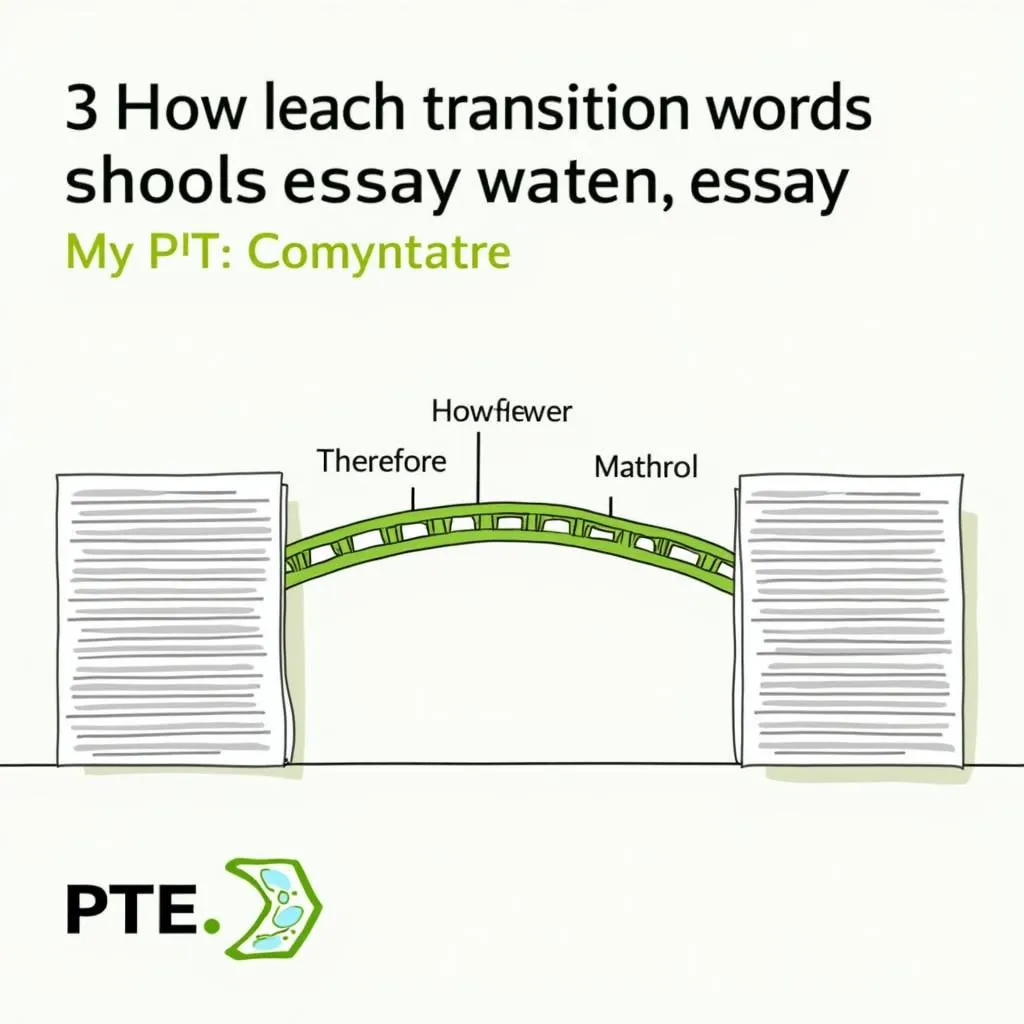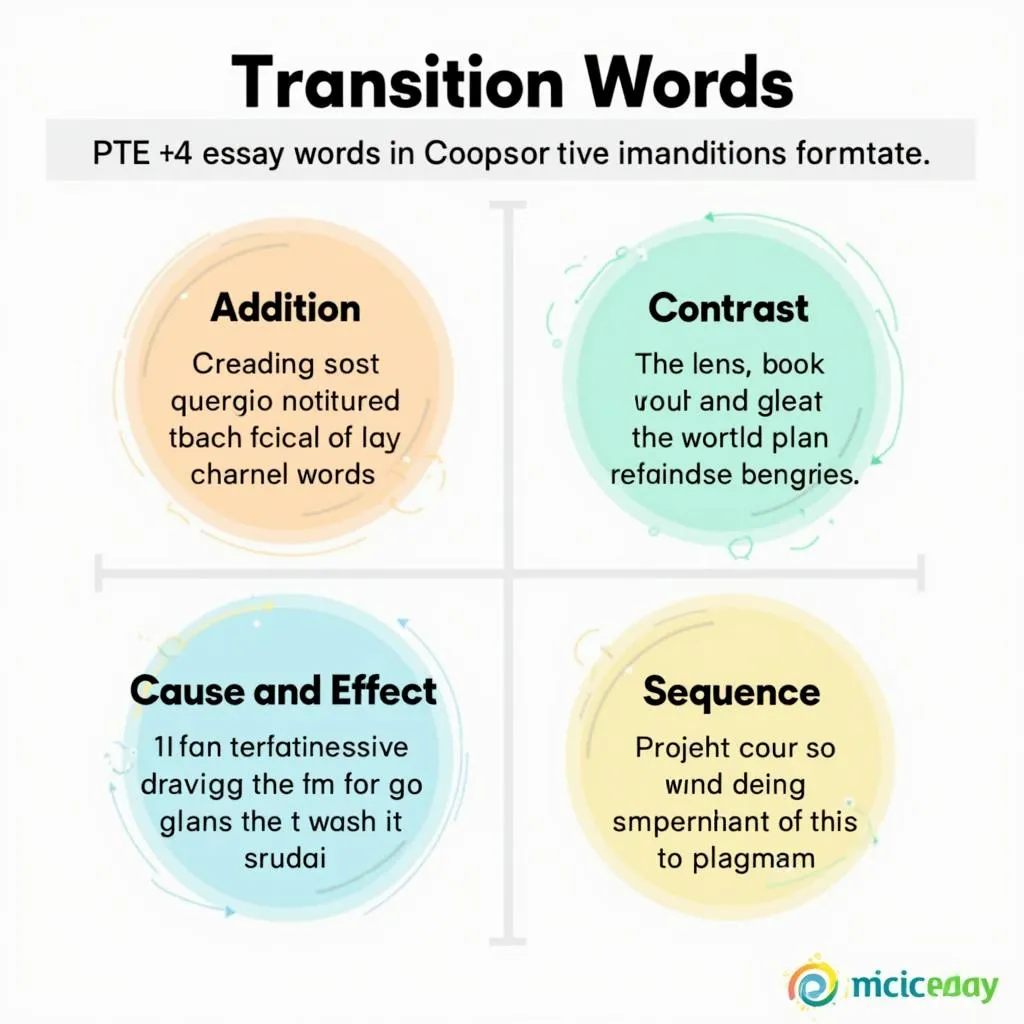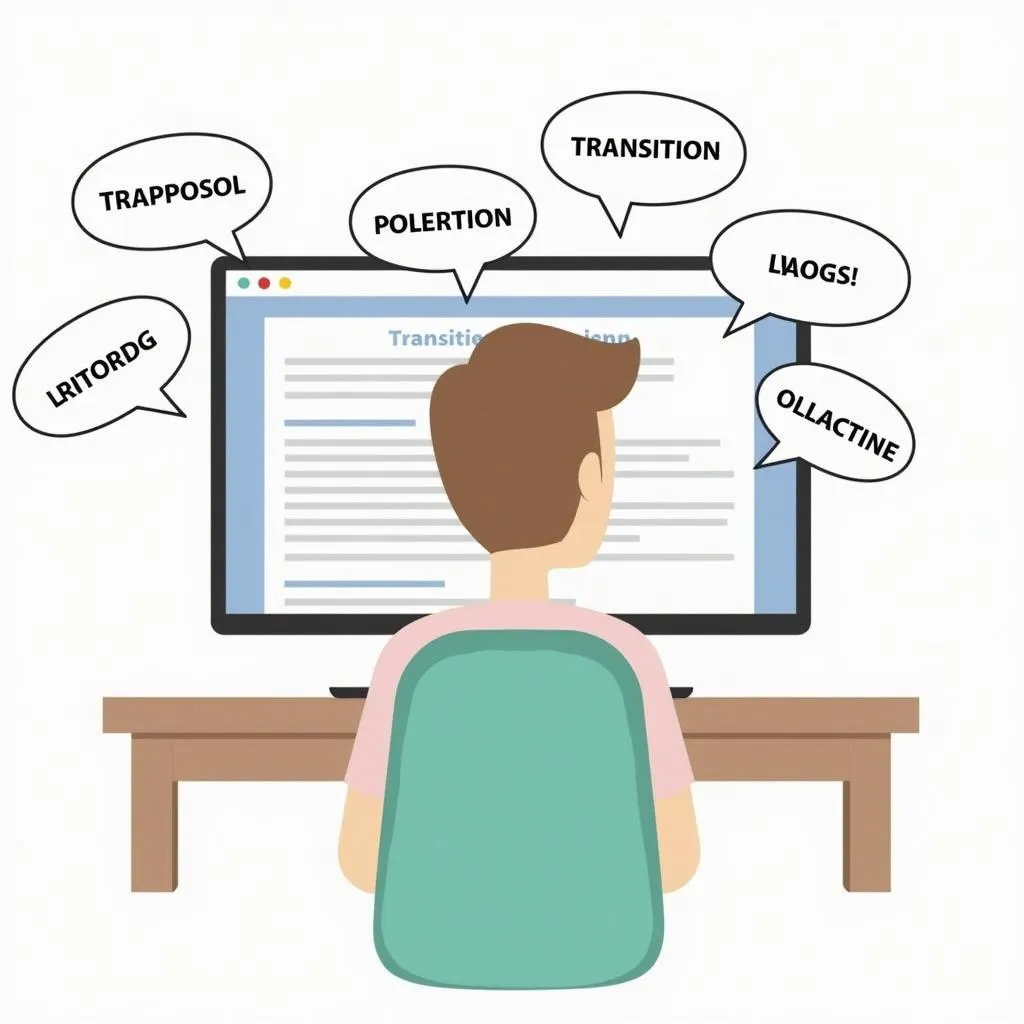Mastering transition words is crucial for achieving a high score in the PTE Academic essay writing task. These linguistic bridges not only enhance the flow of your ideas but also demonstrate your command of English to the examiners. In this comprehensive guide, we’ll explore the most effective transition words and phrases to elevate your PTE essay writing skills.
Understanding the Importance of Transition Words in PTE Essays
Transition words are the glue that holds your essay together, creating a seamless connection between ideas and paragraphs. They guide the reader through your argument, making your writing more coherent and professional. In the context of PTE Academic, using a variety of appropriate transition words can significantly boost your scores in both written discourse and vocabulary range.
 Importance of transition words in PTE essays
Importance of transition words in PTE essays
Categories of Transition Words for PTE Essays
To use transition words effectively, it’s essential to understand their different categories and functions. Here’s a breakdown of the main types of transition words you should incorporate into your PTE essays:
1. Addition and Elaboration
These words help you add information or expand on a previous point:
- Moreover
- Furthermore
- Additionally
- In addition
- Also
- What’s more
2. Contrast and Comparison
Use these to show differences or similarities between ideas:
- However
- On the other hand
- In contrast
- Conversely
- Similarly
- Likewise
3. Cause and Effect
These transitions illustrate relationships between actions and their consequences:
- Therefore
- As a result
- Consequently
- Thus
- Hence
- Due to
4. Sequence and Order
When presenting ideas in a particular order or timeline, consider using:
- Firstly
- Secondly
- Finally
- Subsequently
- Meanwhile
- Eventually
 Categories of transition words for PTE essays
Categories of transition words for PTE essays
Strategies for Using Transition Words Effectively in PTE Essays
To maximize the impact of transition words in your PTE essays, consider the following strategies:
-
Vary your usage: Don’t rely on the same few transition words throughout your essay. Diversify your choices to showcase your vocabulary range.
-
Use transitions between paragraphs: Start each new paragraph with a transition word or phrase to create a smooth flow between major ideas.
-
Employ transitions within paragraphs: Connect sentences within paragraphs using appropriate transitions to maintain coherence.
-
Choose the right transition for the context: Ensure that the transition word you select accurately reflects the relationship between the ideas you’re connecting.
-
Don’t overuse: While transitions are important, using too many can make your writing feel forced or choppy. Aim for a natural flow.
How to structure a PTE essay effectively provides additional insights into organizing your essay for maximum impact.
Common Mistakes to Avoid with Transition Words
Even with the best intentions, test-takers can misuse transition words. Here are some pitfalls to watch out for:
- Using transitions unnecessarily: Sometimes, ideas flow naturally without the need for a transition word.
- Mismatching transitions: Ensure the transition word accurately reflects the relationship between ideas.
- Overreliance on simple transitions: While “and” and “but” are useful, they shouldn’t be your only transitional tools.
- Forgetting punctuation: Remember to use appropriate punctuation with your transition words, especially when they start a sentence.
“The key to effective use of transition words is understanding their nuances and applying them judiciously,” says Dr. Emma Richards, a renowned PTE preparation expert. “It’s not about quantity, but quality and appropriateness.”
Practical Exercises to Improve Your Use of Transition Words
To enhance your skills with transition words, try these exercises:
-
Paragraph connection: Take two unrelated paragraphs and practice connecting them using different transition words. See how the meaning changes with each transition.
-
Transition word replacement: In a sample essay, replace all instances of “and” and “but” with more sophisticated transitions. Observe how this elevates the writing.
-
Gap-fill exercises: Remove transition words from a well-written essay and practice filling in the blanks with appropriate transitions.
-
Transition categorization: Create a list of transition words and categorize them based on their function (e.g., addition, contrast, cause and effect).
How to practice summarizing written text for PTE offers additional practice techniques that can help refine your use of transitions in various writing tasks.
 Practicing transition words for PTE essays
Practicing transition words for PTE essays
Advanced Transition Techniques for High-Scoring Essays
To truly excel in your PTE essay, consider these advanced techniques:
-
Use transitional phrases: Instead of single words, incorporate phrases like “In light of this evidence” or “Taking this into account.”
-
Employ question transitions: Pose a rhetorical question to transition between ideas, engaging the reader and maintaining flow.
-
Utilize parallel structures: Create cohesion by using similar grammatical structures to link ideas, even without explicit transition words.
-
Implement transitional paragraphs: For longer essays, consider using a short paragraph to bridge two major sections of your argument.
PTE essay writing body paragraph tips can provide further guidance on structuring your essay for maximum coherence and impact.
Conclusion: Mastering Transition Words for PTE Success
Incorporating a rich variety of transition words in your PTE essays is a powerful strategy for improving your score. By understanding the different types of transitions, practicing their use, and avoiding common mistakes, you can significantly enhance the coherence and sophistication of your writing. Remember, the goal is not just to use transition words, but to use them effectively to create a compelling and well-structured essay that showcases your English language skills.
As you prepare for your PTE Academic test, make transition words an integral part of your writing practice. With time and effort, you’ll find that these linguistic tools become second nature, allowing you to focus on crafting strong arguments and expressing your ideas with clarity and confidence.
PTE exam time management hacks can help you balance your focus on transition words with other crucial aspects of the test, ensuring you’re well-prepared for success on exam day.
FAQ
What are the most important transition words for PTE essays?
The most crucial transition words include “however,” “therefore,” “furthermore,” “in contrast,” and “consequently.” These help to show relationships between ideas and enhance the overall coherence of your essay.
How many transition words should I use in a PTE essay?
There’s no fixed number, but aim to use 1-2 transition words or phrases per paragraph. The key is to use them naturally and appropriately rather than forcing them into your writing.
Can using too many transition words negatively affect my score?
Yes, overusing transition words can make your writing seem forced or unnatural. Focus on using them where they genuinely improve the flow and clarity of your ideas.
Are there any transition words I should avoid in PTE essays?
While no transition words are strictly off-limits, try to avoid overusing simple transitions like “and” or “but.” Opt for more sophisticated options that demonstrate a higher level of language proficiency.
How can I practice using transition words effectively?
Read high-quality essays and articles, noting how transitions are used. Practice writing essays and have them reviewed by a tutor or peer. You can also try rewriting sentences or paragraphs, focusing on improving transitions.
Do transition words count towards the word limit in PTE essays?
Yes, transition words are counted in the overall word count. However, their value in improving your essay’s coherence and flow far outweighs their minimal impact on word count.